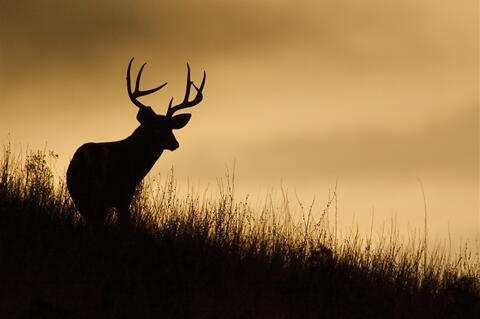Jamestown Canyon Virus: About
Jamestown Canyon is an illness spread to people by the bite of an infected mosquito. It is currently unknown which types of mosquitoes spread Jamestown Canyon virus in Wisconsin.
Jamestown Canyon virus is most commonly reported in Wisconsin and Minnesota. Infection with Jamestown Canyon virus can range from no symptoms (asymptomatic infection) to severe disease affecting the brain and spinal chord. Illness from Jamestown Canyon virus is relatively rare in Wisconsin but recently there has been an increase in the number of cases.
Anyone can get Jamestown Canyon, but people who spend more time outdoors are at a higher risk of being bitten by an infected mosquito. Mosquitoes are usually most active in Wisconsin from May to October, but the risk of Jamestown Canyon virus is highest during June through September.
Mosquitoes can be found in areas with standing water, which they need to breed. It is important to remove standing water sources, such as containers, leaves, and yard debris, to reduce breeding habitats in your yard.
Map description
The map shows the total number of Jamestown Canyon virus cases reported in each Wisconsin county during the 13-year period of 2011 through 2023 per 100,000 people.
Protect yourself with Mosquito Bite Prevention
Jamestown Canyon virus 101
Jamestown Canyon virus is spread to humans through the bite of an infected mosquito.
There may be many different animals that are able to spread Jamestown Canyon virus to mosquitoes, but mosquitoes most likely become infected by feeding on infected mammals, such as white-tailed deer.
After feeding on an animal that has Jamestown Canyon, the virus may end up inside of the mosquito.
Once it has the virus, a mosquito can spread the virus to other mammals, including humans, when they take another blood meal.
Mosquitoes are usually most active in Wisconsin during the summer months, into the fall.
Few mosquitoes actually carry the virus, but it is important to prevent mosquito bites when spending time outside.
Symptoms can show up two to 14 days after being bitten by an infected mosquito.
Most people who are infected with Jamestown Canyon virus never develop symptoms. Others may develop mild symptoms like fever, fatigue, and headache. Infection with the virus can lead to severe illness, including neurological symptoms, but this is rare. Severe illness is more likely to develop in the elderly or in people with compromised immune systems. Death from an infection with Jamestown Canyon is rare, but has been documented. If you have had Jamestown Canyon, you cannot get it again.
Mild signs and symptoms
- Fever
- Headache
- Fatigue
- Chills
- Muscle aches
- Nausea or vomiting
- Joint pain
Severe signs and symptoms
- Encephalitis (inflammation of the brain)
- Meningitis (inflammation of the membranes around the brain and spinal cord)
- Increasing fatigue and weakness
- Confusion or disorientation
- Severe headache
- Neck stiffness
There is no specific anti-viral treatment or vaccine for Jamestown Canyon. Over-the-counter pain relievers may be given to relieve mild symptoms.
In severe cases, patients may need to be hospitalized to receive supportive treatment.
If you believe you or a family member may have Jamestown Canyon, contact your doctor immediately.
Resources from the Wisconsin Department of Health Services (DHS)
- Signs, symptoms, and prevention—Jamestown Canyon Virus Fact Sheet, P-02452
- Fact sheet with simple steps to take to prevent bites—Protecting Your Family From Mosquitoes and Ticks, P-02080 (PDF)
Resources from the CDC (Centers for Disease Control and Prevention)
- Signs and symptoms, treatment, prevention, and more—Jamestown Canyon: Symptoms, Diagnosis, and Treatment
- Steps to take to avoid bites—Preventing Mosquito Bites
- Educational activity book for kids—Mosquito Bites Are Bad (PDF)
Partner resources
- Information from the University of Wisconsin-Madison Medical Entomology Laboratory—Mosquitoes of Wisconsin
Contact us
Questions about illnesses spread by mosquitoes? We’re here to help.
Bureau of Communicable Diseases
Phone: 608-267-9003
Fax: 608-261-4976


